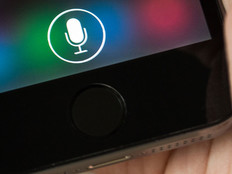A Lawyer Explains How to Use Android Tablets in Court
When it comes to using tablets for work, some might say that Apple’s iPad leads the pack. The company’s latest commercial, which shows creative types using the iPad Air in various settings, certainly makes that case.
But Android-powered tablets are quickly proving that they can offer similar productivity and efficiency for professional users as well. Jeffrey Taylor, a lawyer and Android enthusiast who runs The Droid Lawyer blog, recently wrote a post outlining how he has been able to put his Android tablet to good use in the courtroom.
Before any law firm gets started with using Android tablets in court, they should first commit to a paperless office, Taylor says. That means attorneys and paralegals need to be diligent about scanning documents so that they’re accessible and available as PDF files.
Once a process for scanning and digitizing documents is established, then attorneys must set up their storage systems on their Android tablets. Unlike iOS, Android supports a local-storage filing system that is quite similar to Windows. Taylor uses the ASTRO File Manager, which offers similar functionality to Windows Explorer. For those who prefer to go the cloud route, a number of options are available, including Dropbox, Box and Bitcasa.
Once the storage platforms are sorted out, then attorneys can go to work with their tablet. Taylor outlines his personal use case:
Before a deposition, hearing, or trial, I’ll move the entire client folder to my device. I usually move the files the night before, but I may transfer the information months earlier depending on the necessity. For hearings, which are usually single-subject conflicts, I try to keep the larger folder separated from my smaller one because it’s easier to locate my annotated documents when they’re away from the larger, chaotic mess. It’s personal preference more than anything.
I’ll also print off any exhibits I’m presenting. I already have my marked up documents, so I don’t worry about those, except to make sure they’re in the order I want to present. Although a severely marked up exhibit is intimidating to a witness at a deposition, I find it’s rarely any more effective than good preparation. Plus, I love keeping my copy close to my chest so the opposition doesn’t know what to expect.
During the deposition, hearing, or trial, I start my arguments and quickly refer to any other documents from the opposition. At this point, I should also interject a comment about the importance of file organization and naming. I tend to use names that fully describe the document or the information. Moreover, if I’m at trial, and I have any indication of what exhibits the other side will use, I’ll prepare those for easy access and reference when needed.
One app that Taylor relies on in particular is Depose. The app allows him to draft questions and link them with the relevant exhibit.
Another pro tip for attorneys looking to use tablets in the courtroom is to adopt a shorthand for note taking that optimizes speed over grammar or spelling.
Taylor offers this example of his shorthand:
my lng lks lk ths; dft spk abt neg per se bt ddnt tll jry abt elmnts.
This might look like Klingon to you, but to Taylor it makes perfect sense.
Do any other attorneys out there use Android tablets or smartphones during trial? Let us know in the comments.








